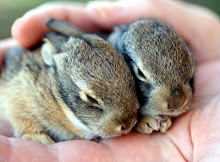Well, I really have nothing else to say about cottontail rabbits, but, good luck trying to rehabilitate them. One thing I’ve noticed is how grammar can really save someone’s life. For example “let’s go eat grandma” or “let’s go eat, grandma.” Sure I make mistakes every now and again, but, I came across that on Facebook and thought it sure was funny.
Another thing I watched a few months back, that I can’t just get a grip on is how kangaroos give birth. I mean at first they look like little worms! Then they have so squirm their way up their mother’s pouch it’s really quit gross actually. Then, the mom’s pouches stretch so huge for the joey. If you haven’t seen a kangaroo give birth you really need to see this video.http://www.youtube.com/watch?v=2lCKc8tURtc I promise a life change! I don’t know if all marsupials give birth this way or not; if anyone knows tell me!
Then next topic I’d like to discuss is I would really like to volunteer in another country. I wish my parents could support me. I mean I know it’s a lot to ask but it’d be fun. I mean even if they don’t support me on that I just wish my dad could support me on something, ya know? Now I’m just venting, hehe. Oh well Watch that Kangaroo video please everyone!http://www.youtube.com/watch?v=2lCKc8tURtc
GOOD LUCK WITH THE COTTONTAILS!!!!


